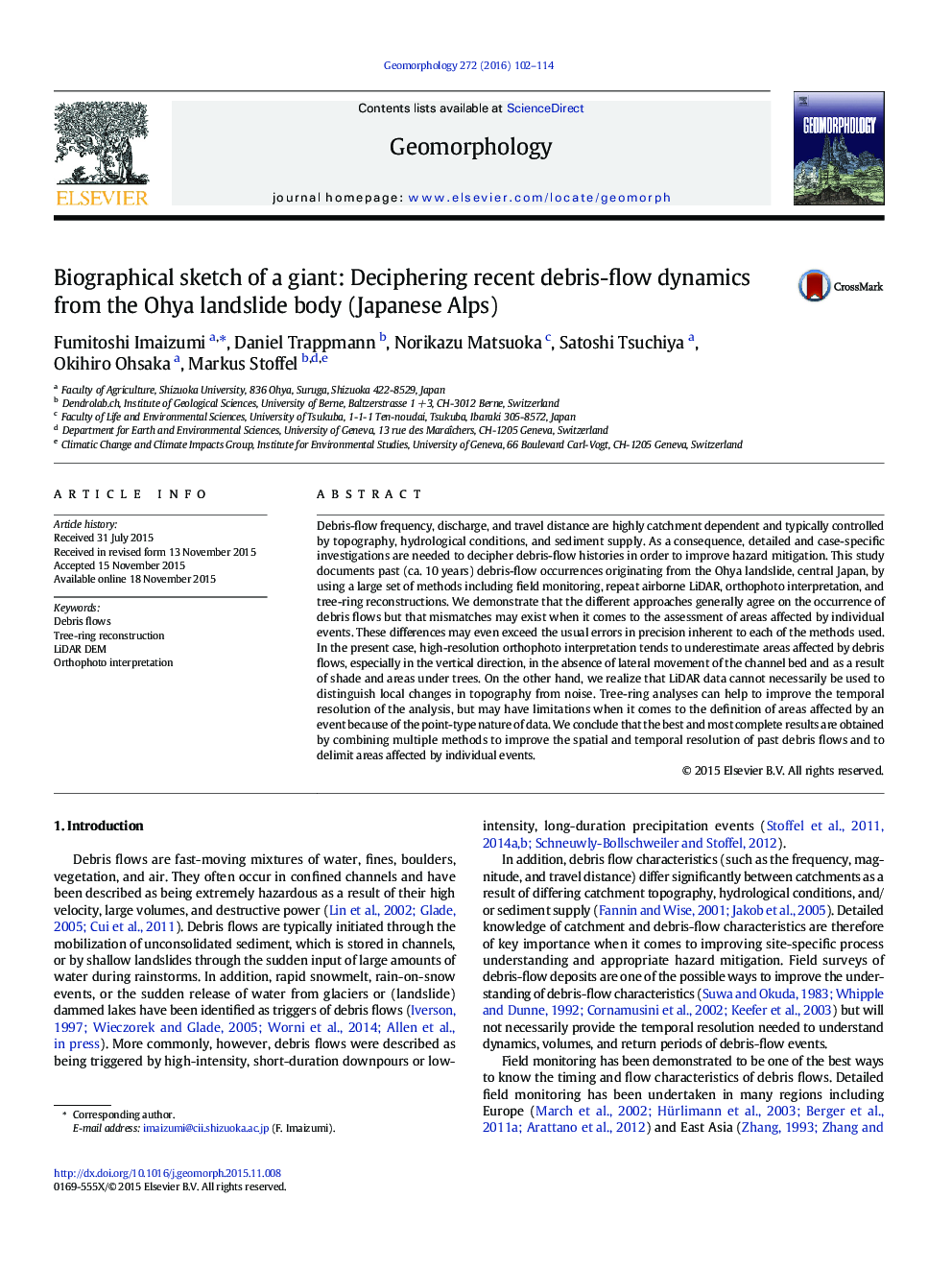| کد مقاله | کد نشریه | سال انتشار | مقاله انگلیسی | نسخه تمام متن |
|---|---|---|---|---|
| 4683867 | 1635377 | 2016 | 13 صفحه PDF | دانلود رایگان |
• Debris-flow occurrences at Ohya landslide are documented with multiple methods.
• Different approaches generally agree on debris flow occurrence, but mismatches exist.
• Orthophoto interpretation tends to underestimate areas affected by debris flows.
• LiDAR data sometimes fails to distinguish local changes in topography from noise.
• Tree-ring analyses can help to improve the temporal resolution of debris-flow events.
Debris-flow frequency, discharge, and travel distance are highly catchment dependent and typically controlled by topography, hydrological conditions, and sediment supply. As a consequence, detailed and case-specific investigations are needed to decipher debris-flow histories in order to improve hazard mitigation. This study documents past (ca. 10 years) debris-flow occurrences originating from the Ohya landslide, central Japan, by using a large set of methods including field monitoring, repeat airborne LiDAR, orthophoto interpretation, and tree-ring reconstructions. We demonstrate that the different approaches generally agree on the occurrence of debris flows but that mismatches may exist when it comes to the assessment of areas affected by individual events. These differences may even exceed the usual errors in precision inherent to each of the methods used. In the present case, high-resolution orthophoto interpretation tends to underestimate areas affected by debris flows, especially in the vertical direction, in the absence of lateral movement of the channel bed and as a result of shade and areas under trees. On the other hand, we realize that LiDAR data cannot necessarily be used to distinguish local changes in topography from noise. Tree-ring analyses can help to improve the temporal resolution of the analysis, but may have limitations when it comes to the definition of areas affected by an event because of the point-type nature of data. We conclude that the best and most complete results are obtained by combining multiple methods to improve the spatial and temporal resolution of past debris flows and to delimit areas affected by individual events.
Journal: Geomorphology - Volume 272, 1 November 2016, Pages 102–114
